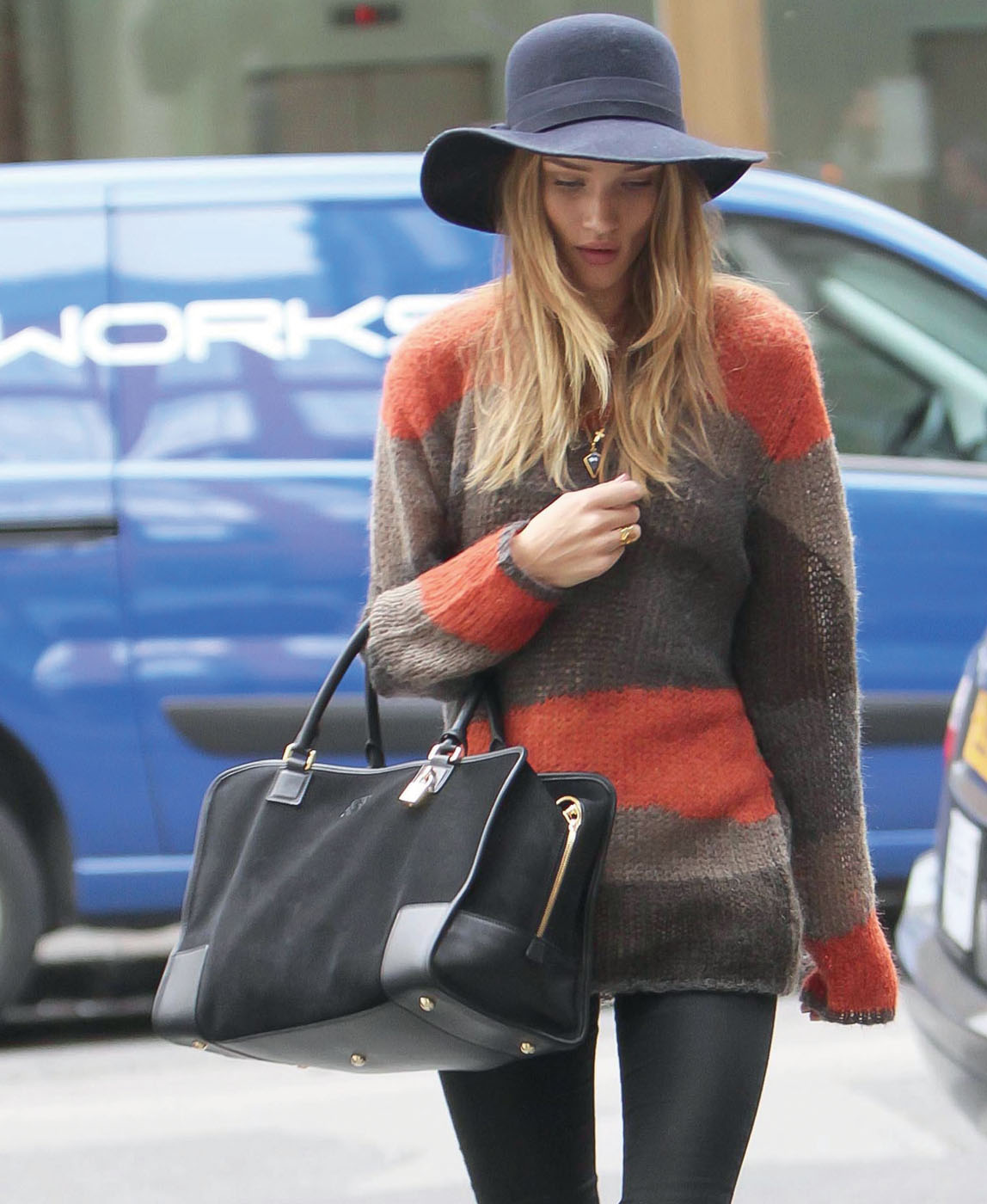AMAZONA, 1975

Amazona bag, backstage at Loewe, Spring 2011 ready-to-wear.
Jason Lloyd-Evans
Loewe began in 1846 as a small workshop, shared by José Silva and Florencio Rivas, dedicated to small leather goods such as men’s wallets and cigar holders. Based in the heart of Madrid, they worked quietly for the next twenty or so years until the German leather tanner and bag designer Enrique Loewe Roessberg joined the atelier, initially working as a producer of pistol holders. By 1872 Roessberg became their principal business partner, and by 1892 the firm was born. Loewe cultivated a reputation for high-quality leathers and exotics—iguana, snake, crocodile—and for fine craftsmanship. In 1905 the company was named an official supplier for the Spanish royal family. In five short years, they were renowned throughout Spain.
Loewe became synonymous with luxury and glamour. It’s reportedly where Ernest Hemingway brought Ava Gardner for a little retail pick-me-up after her split with Frank Sinatra. Marlene Dietrich, Rita Hayworth, and Sophia Loren were all fans.
While Loewe, nicknamed the “Hermès of Spain,” has had a roster of bestsellers—including the Cruz bag, designed in collaboration with the Spanish actresses Penelope and Monica Cruz—it’s the Amazona that earns the top spot here. Big, soft, and rectangular, with leather patches at the bottom corners, the style, introduced in 1975, just as the country was emerging from the Franco era, has been a must-have for decades. The substantial size was deliberate. Stuart Vevers, the brand’s former creative director, explained to Harper’s Bazaar in 2013, “It was designed to celebrate the new freedom that women had—working and traveling by themselves for the first time. So it was big enough to hold all their belongings.”
In recent years, the Amazona has had a resurgence outside Spain, thanks to new creative heads such as Vevers and Jonathan Anderson. They revamped the style with new color combinations, fabrics, and prints and toyed slightly with the silhouette while always keeping an eye on its roots in a sporty classicism. “When I arrived, there was an attitude of: ‘Can you design us an It bag please, to put us on the map?’” recalled Vevers in the Telegraph in 2012. “But I felt it was very important to get away from all that. I consider the Amazona more of an emblem. I wanted a bag that could evolve year after year. It had to be more than something you just chucked a load of bling at.”
The Amazona wasn’t the only Loewe icon to get an update. In 2014 Anderson replaced the font used for the logotype with a new one, moving from Bembo to Pegasus, created by German typographer and calligrapher Berthold Wolpe in 1937. Designed by creative agency M/M (Paris), it’s a subtle nod to Enrique Loewe Roessberg’s German roots.
“For me, Loewe’s Spanishness is what makes it so unique and intriguing. The management might be international but the 200 artisans are all Spanish. That shows in everything they do. It’s not delicate or light. It’s strong and bold. These bags couldn’t come out of any other country.”
—STUART VEVERS, The Telegraph, May 23, 2012

Model Rosie Huntington-Whiteley carrying an Amazona bag, London, October 2011.
Bauer Griffin: Jack Ludlam/bauergriffinonline.com